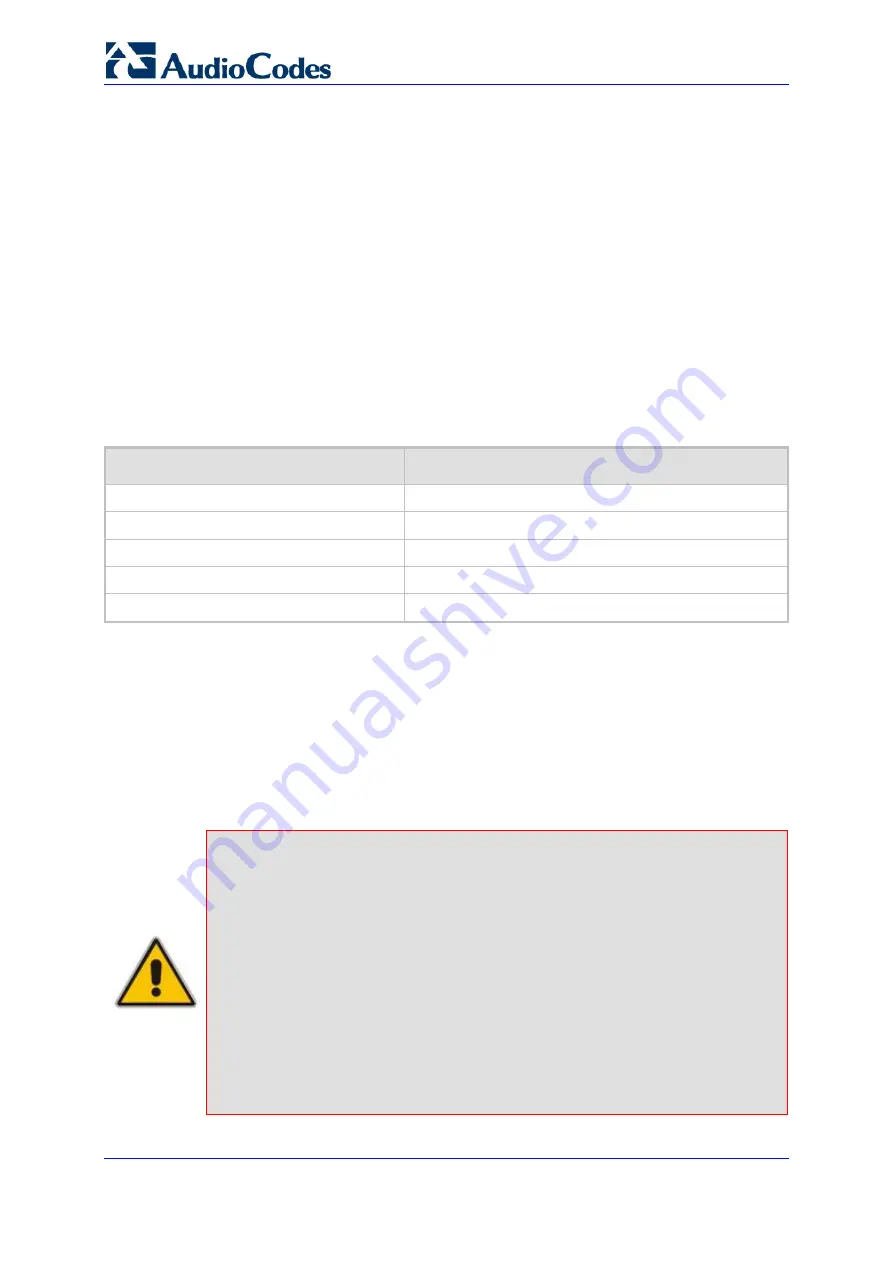
SIP Hardware Installation Manual
14
Document #: LTRT-94701
3000 Series Gateways & Media Servers
2.2 Chassis
The device's chassis is comprised of a compact, rugged 19-inch rack mount unit, 2U high
(3.5" or 89 mm), designed to meet NEBS Level 3 requirements. The device is a four-slot
chassis (four front and four rear slots) for housing the cPCI blades, and Alarm and Status
blades. The front and rear blades interface via a midplane located in the middle of the
chassis. The device's modular design allows easy installment and replacement of modules
such as the Fan Tray and Power Entry modules.
The chassis includes an ID Prom component that clearly defines the hardware version. The
chassis also includes a DIP switch for configuring the shelf geographical addressing.
2.2.1 Dimensions
The device's chassis dimensions are listed in the table below.
Table
2-4: Chassis Dimensions
Dimension
Value
Width
48.3 cm (19 inches)
Height
2U or 8.9 cm (3.5 inches)
Depth
29.68 cm (11.69 inch)
Weight (fully loaded)
13 kg (29 lb)
Weight (fully loaded in packaging)
Approx. 16 kg (35.5 lb)
2.2.2 Card
Cage
and Slot Assignment
The chassis contains four front and rear card slot cages. Blades and RTMs are inserted
from the front and the back and engage the midplane on either side, inside the card cage.
A diagram indicating the number of the slots and Power Supply unit is located on the Fan
Tray panel (refer to ''Chassis Cooling System'' on page
). The midplane contains slot
keys (located in the middle of the midplane), which match the appropriate blade/RTM. This
prevents insertion of a blade/RTM in an incorrect slot.
Notes:
•
While the slot keys on the midplane are designed to prevent the insertion
of a blade in an incorrect location, ensure that you don’t force a
blade/RTM into a slot to avoid damaging either the blade/RTM or the
midplane.
•
High Availability (HA) is applicable only to Mediant 3000 (i.e., not
supported for IPmedia 3000 systems).
•
All unoccupied slots are covered with protective blank panels (refer to
''Replacing Blades'' on page
•
The default IP addresses of the 8410 and 6310 blades depends on the
slot in which they reside: Slot #1 is 11.3.9.1 (active blade); Slot #3 is
11.3.9.2 (redundant blade). The subnet address for both blades is
255.255.255.252.















































